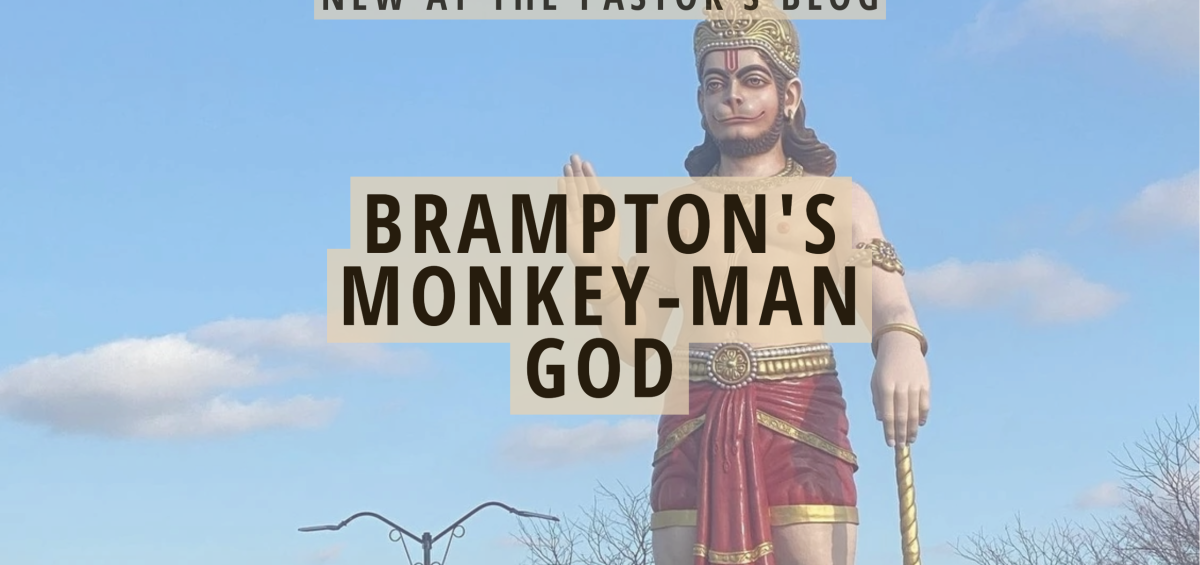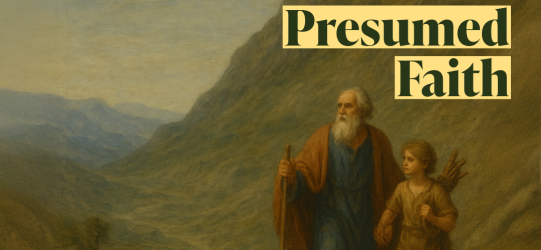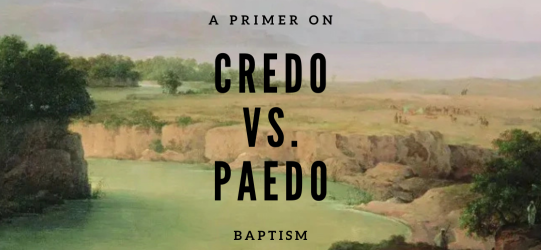A Hindu group is erecting a 55-foot-high statue of a Hindu god on their temple-grounds in Brampton, Ontario. For context, 55 feet is about the length of a full-size big-rig trailer on the highway. The Hollywood sign is only 50 feet high. It’s an imposing figure, and its stature would cast a long shadow over most residential houses. The statue is a likeness of the Hindu god, Hanuman. So, it’s not really a statue; it’s an idol. According to Hindu religion, Hanuman is a deified monkey-man who was the commander of a monkey army. He once burned down the Island of Lanka with his monkey tail after successfully rescuing a Hindu goddess from the clutches of Lanka’s demon king. He’s a religious and political hero.
Some conservatives consider the idol an affront to Canadian values, while others see it as consistent with the perceived efficacy of so-called Canadian pluralism. Cosmin Dzsurdzsa, as an example of the former, has questioned why a “foreign deity” should “tower over a Canadian skyline.” Rupa Subramanya, exemplifying the latter view, has labelled those who object to towering idolatry as “racist and bigoted.” The likes of Dzsurdzsa consider the idol inconsistent with our national identity. Subramanya equates the gaudy idol with ornate churches, while also linking Christians who oppose idols with Islamo- fascists. Subramanya, an ardent critic of Prime Minister Trudeau, ironically envisions a Canada more Trudeaupian than she might admit, but I’ll discuss that near the end of this piece.
That this statue – now likely the largest idol of its kind outside Asia – is in Brampton ought not surprise a soul. Brampton, with more immigrants than non-immigrants, is essentially an Indian enclave. Roughly 200,000 of its 600,000 residents were born in India, and only 55% of the population speak English at home. Folks outside of Brampton now call it “Bramladesh.” I’ve met several Indians who’ve moved out of Brampton because it reminds them too much of old India. Brampton, incorporated in 1853, was originally settled by Methodists who named the city after their hometown of Brampton, England. One of the first things those early settlers did was construct Christian churches. The new settlers build idols.
Since the late 1990s and early 2000s, Brampton has increasingly become more characteristically an Indian colony than its former status as a Christian village within a British colony. The image of Hanuman, if not prescient, is most appropriate for the city. A deified monkey-man and commander of a monkey army who torched Sri Lanka, Hanuman is a symbol of Hindu Nationalism against British colonialism to Rashtriya Swayamsevak Sangh (RSS), a Hindu Nationalist group that reveres Hanuman. For them the image embodies the vision of “a disciplined cadre consisting mostly of upper-caste Brahmins who were dedicated to independence and the protection of Hindu political, cultural, and religious interests.” The Indian government has, in times past, banned the group for its violent terrorist activity. Today, I am told, the group exerts influence within Indian government and abroad.1
For the formerly English Protestant town of Brampton, which now more resembles an Indian satellite community, I can’t think of a more appropriate imposition to its skyline than a deified Hindu monkey-man who is commander of a monkey army, revered for burning down Sri Lanka while embodying the anti-British zeal of strident Hindu Nationalists.
That’s not to say I side with the likes of Subramanya who smear Christian critics of idolatry as “racist and bigoted.” I don’t. I don’t want Canada to resemble a Hindu nation. I’ve spent a lot of time in the Hindu nation of Nepal doing missionary work, and, while happy to lovingly minister the Gospel to the Nepalese, their Hinduism quite literally nauseates me. While once climbing the steps of a Hindu temple, an army of about a dozen gremlin-like monkeys encircled me, hissing at me as if to bait me into a fight. The monkeys are protected on temple grounds for their relation to Hanuman, and, appearing to be infested with fleas and rabies, embodied, I suspect, the demons of Hanuman. More than once I visited the Bagmati River – Nepal’s holiest Hindu waterway – where locals dumped their sewage, burned their dead relatives, and littered their trash, only to bathe in it and drink from it. They believed the Bagmati River, replete with human remains and fecal matter, was Hindu holy water and that their bathing in and drinking of the rancid cocktail would lead to Hindu spiritual blessings. Of course, the only thing it led to was dysentery, if they were lucky. Most people there are malnourished and starving for lack of food, but healthy fattened cattle roam the streets with impunity. The hungry won’t eat the fat cattle, or at least they won’t eat them without facing jail time. Hindus believe that the cows are reincarnated from the same dead relatives that they burn in the Bagmati River, so they worship them while legislating against killing and eating them. The cows are protected by law because they are literally “holy cows.” While “holy” cows roam the streets with impunity, the starving and emaciated denizens who eat them go to jail for blasphemy. It’s a religion that treats cows with more sanctity than humans. So, no, I don’t side with Subramanya, who libels opponents of public idolatry as “racist and bigoted.” Hinduism is rank idolatry, and its fruit is filth and human suffering. I want nothing of it, and I loath all its manifestations, especially those in Canada.
The towering idol of Hanuman is apropos, not because I like it, but because it stands for what Ontario is becoming and what Brampton is. Fifty-years ago, the government of Pierre Elliot Trudeau adopted multiculturalism as our official national identity. It replaced our previous identity which was rooted in English Protestantism. Our culture, customs, laws, and civil rights were all rooted in Scripture. Long before a 55-foot gaudy idol cast its shadow over an Ontario city, the neo-Gothic spires of Protestant churches decorated our landscape. The neo-Gothic style of the churches intentionally declared that Ontario finds its roots in the soil of mediaeval England. At the turn of the 20th century, over 90% of non-Catholic Ontarians regularly attended those Protestant churches, confessing the atoning death of Christ and His subsequent resurrection in their worship.2 That is not the Ontario of today.
Trudeau’s multiculturalism was a ruse. Like Rupa Subramanya did in defence of Brampton’s newest eyesore, multiculturalism equates Christian churches with Hindu idolatry, and Christian laws with Islamo-fascism. That’s what multiculturalism is. It’s the leveller of Christian civilization. It declares that beauty and ugliness are the same. That was the Trudeaupian vision. It’s also the vision that Rupa Subramanya espouses. It’s the secular vision that all cultures are equal. All cultures are equal except the culture of the people who call all cultures equal. That culture is extra equal, and it happens to be the culture of Trudeau and Subramanya: the multicultural culture. Disagree with the multicultural culture, and then your culture is racist and bigoted. We thought multiculturalism only meant vast arrays of ethnic food, but, like Eve, we were tricked by the offer of food into inheriting a gaudy, dirty, and cold dystopia, that calls beauty “ugly” and ugly “beauty”.
The ugliness of the idol aside, it’s an abomination to God. The 2nd Commandment reads:
Thou shalt not make unto thee any graven image, or any likeness of any thing that is in heaven above, or that is in the earth beneath, or that is in the water under the earth: Thou shalt not bow down thyself to them, nor serve them: for I the LORD thy God am a jealous God, visiting the iniquity of the fathers upon the children unto the third and fourth generation of them that hate me; And shewing mercy unto thousands of them that love me, and keep my commandments (Exodus 20:4-6, KJV).
The curse of God remains on idolaters to the third and fourth generation. Also, idolatry is equated with the hatred of God. A nation that tolerates the worship of statues is a nation that finds itself under God’s curse, and, without repentance, invites God’s curse on its children, grandchildren, and great-grandchildren. The New Testament tells us that idolators or idol-worshippers go to hell (1 Corinthians 6:9-10; Revelation 22:15). Christians cannot tolerate idolatry, because God hates it.
I hate those who pay regard to worthless idols, but I trust in the LORD (Psalm 31:6).
We could have had the neo-Gothic spires of Protestant churches adorned with choirs singing English hymnody, but we have a 55-foot-high deified monkey-man embodying Hindu Nationalism that resembles a cartoonish mutant action figure: a teenage mutant ninja monkey.
Decisions have consequences, and here we are. With sin comes ugliness, and the rejection of Christ for multiculturalism was sin. Brampton’s monkey-man god is ugly, unsightly, monstrous, grim, obnoxious, foul, horrid, hideous, and appalling. And it’s offensive to God.
Multiculturalism is an ugly disaster, Brampton’s idol being only a fraction of that ugly disaster, and it will only get worse or be replaced by something far worse, unless we repent to God for what we’ve become by our own choice. That includes repenting for the murder of children in the womb. It includes repenting for tolerating sodomy. It includes repenting for murdering the sick under the pretence of MAID. It includes repenting for sending children to schools that promote Darwinian evolution and trannies. It includes repenting for abandoning the 10 Commandments as the basis of law and human rights.
It includes again building churches, going to church to worship the Triune God, believing in the Gospel, and finding forgiveness for sins in Jesus Christ. Christ and Christ alone is the hope of this apostate Canada.
Repentance also includes reducing monkey-man idols to ash and rubble.










